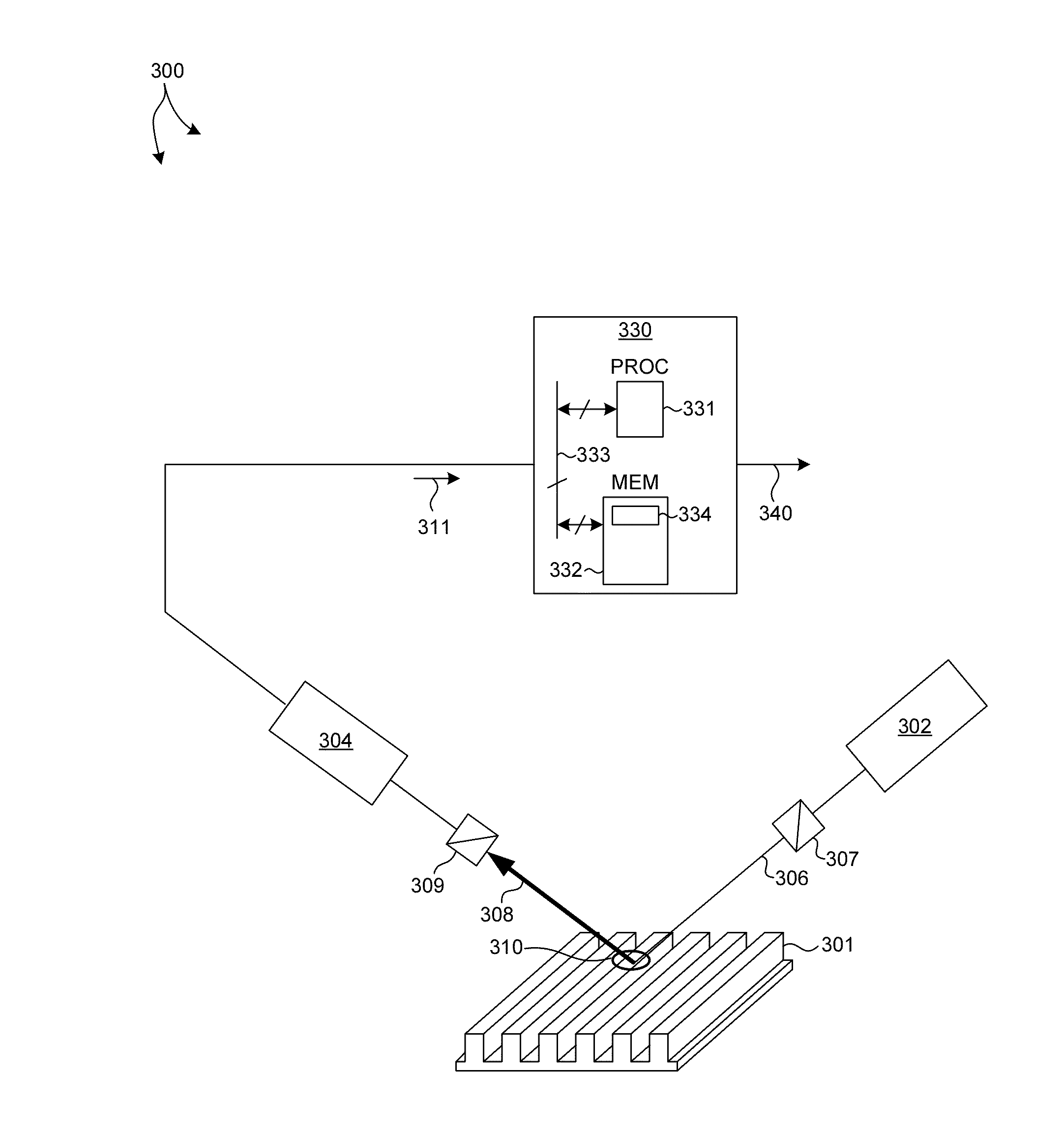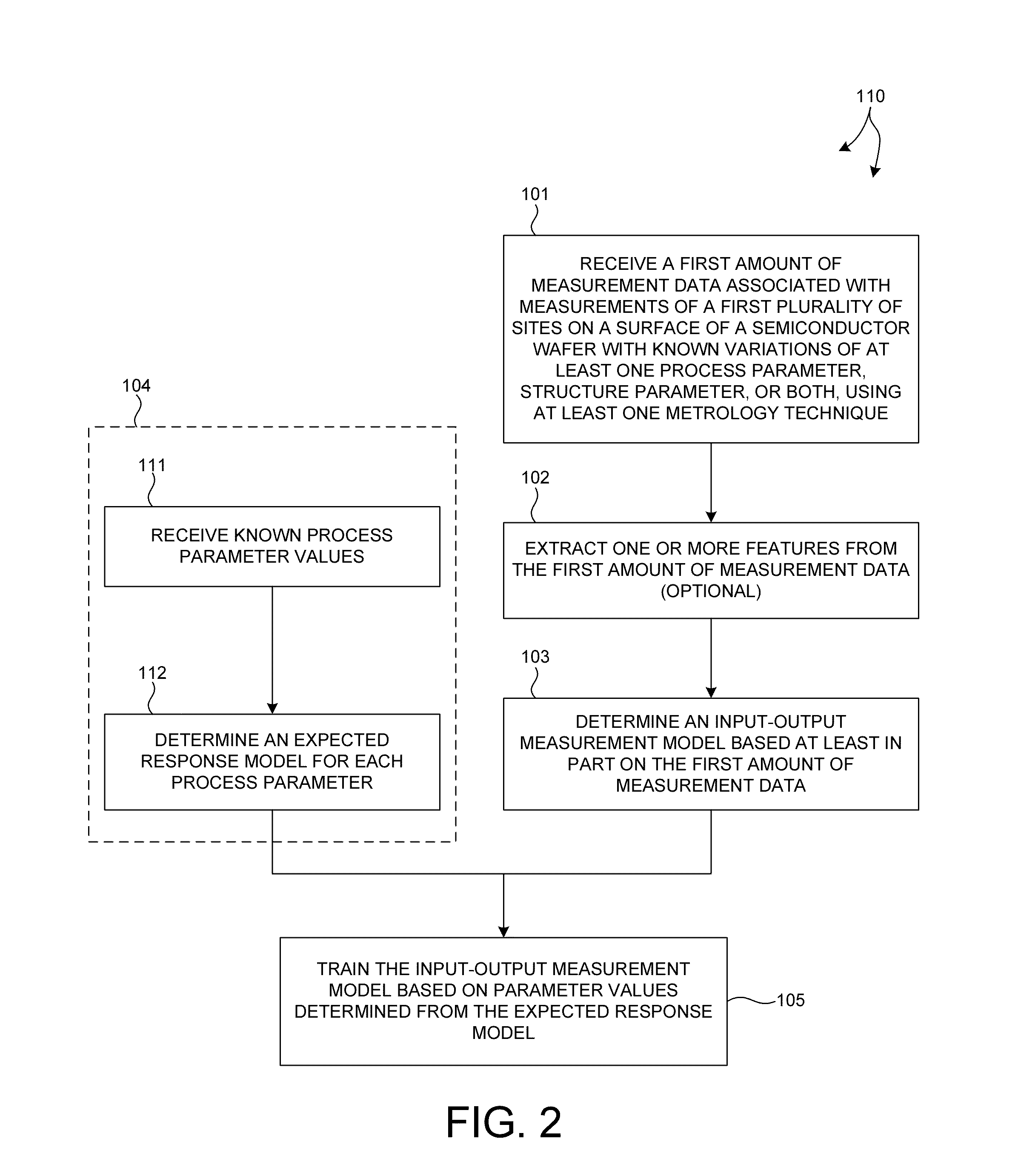Statistical model-based metrology
- Summary
- Abstract
- Description
- Claims
- Application Information
AI Technical Summary
Benefits of technology
Problems solved by technology
Method used
Image
Examples
Embodiment Construction
[0031]Reference will now be made in detail to background examples and some embodiments of the invention, examples of which are illustrated in the accompanying drawings.
[0032]Methods and systems for creating a measurement model based only on measured training data (e.g., spectra collected from a Design of Experiments (DOE) wafer) are presented. The trained measurement model is then used to calculate process parameter values, structure parameter values, or both, directly from measured data (e.g., spectra) collected from other wafers.
[0033]In one aspect, the measurement models described herein receive measurement data (e.g., measured spectra) directly as input and provide process parameter values, structure parameter values, or both, as output. By streamlining the modeling process, the predictive results are improved along with a reduction in computation and user time.
[0034]In a further aspect, process parameters are directly measured based on the measurement model created from raw mea...
PUM
 Login to View More
Login to View More Abstract
Description
Claims
Application Information
 Login to View More
Login to View More - R&D
- Intellectual Property
- Life Sciences
- Materials
- Tech Scout
- Unparalleled Data Quality
- Higher Quality Content
- 60% Fewer Hallucinations
Browse by: Latest US Patents, China's latest patents, Technical Efficacy Thesaurus, Application Domain, Technology Topic, Popular Technical Reports.
© 2025 PatSnap. All rights reserved.Legal|Privacy policy|Modern Slavery Act Transparency Statement|Sitemap|About US| Contact US: help@patsnap.com



